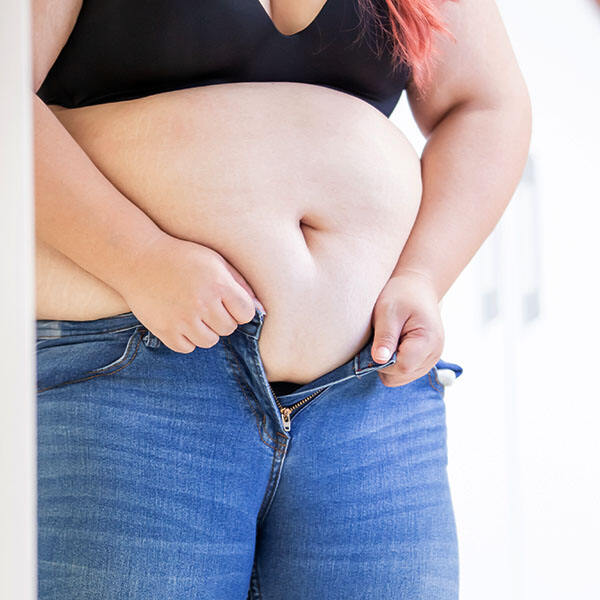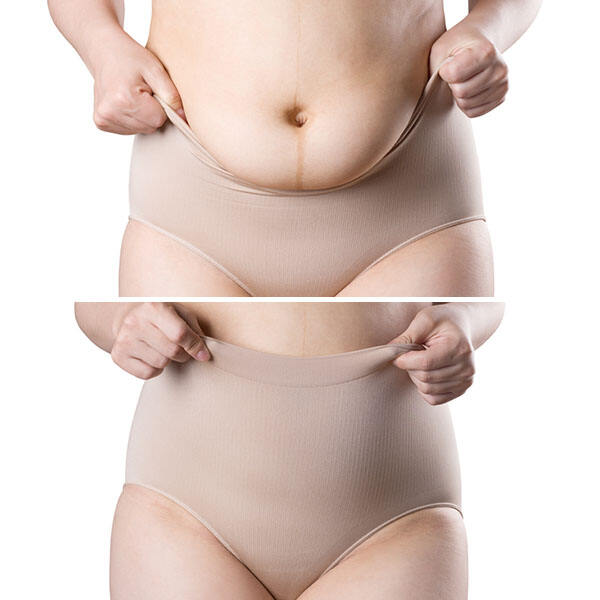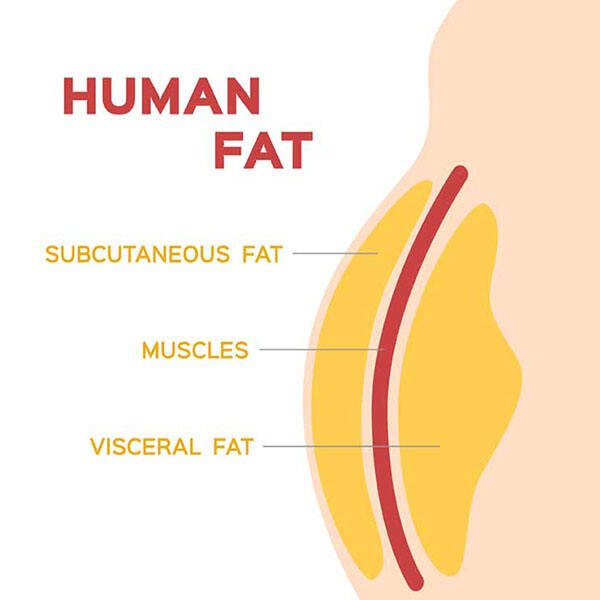머핀 탑에 대한 진실: 머핀 탑의 원인, 과학적으로 입증된 해결책 및 전문가 조언
메타 제목: 머핀탑의 진실: 머핀탑의 원인과 제거 방법 메타 설명: 머핀탑의 진짜 원인, 뱃살의 과학적 원리, 그리고 허리둘레를 줄이는 전문가 팁을 알아보세요. 치료법, 운동, 그리고 셰이프웨어 솔루션에 대해서도 알아보세요.
"머핀 탑(Muffin Top)"이란 단순한 도시적 은어나 미관상의 불편함 이상의 문제입니다. 이는 전 세계 수백만 명의 사람들에게서 체중, 성별, 생활방식과 관계없이 끈질기 있게 축적되는 복부 지방입니다. 이를 머핀 탑, 러브 핸들(Love Handles), 혹은 단순히 허리 지방이라고 부르던 간에, 허리띠 위로 삐져나온 이 보기 싫은 볼록함은 옷차림에 자신감을 잃게 만들고, 식이요법이나 운동로도 해결되지 않는다는 좌절감을 줄 수 있습니다.
하지만 머핀 탑(muffin top)에 대한 진실, 그 원인, 그리고 이를 없애기 위한 최고의 방법들은 종종 오해되곤 합니다. 이는 잘못된 정보와 효과가 없거나 일시적인 다이어트 방법, 그리고 때로는 위험한 체지방 제거 시술로 이어지게 됩니다. 전 세계적으로 복부 둘레가 증가하고 있는 지금, 단순히 외모뿐 아니라 장기적인 건강을 위해서라도 복부 지방의 과학적 이해, 폐경기와 같은 호르몬 변화와 에스트로겐 벨리 지방(estrogen belly fat) 간의 연관성, 코르티솔과 스트레스의 영향, 유전자가 지방 저장에 미치는 역할 등을 아는 것이 그 어느 때보다 중요합니다.
이 심층 가이드에서는 다음 질문들에 답할 것입니다.
· 정확히 말해 머핀 탑이란 무엇이며, 러브 핸들(love handles)과 어떻게 다른가?
· 식단, 호르몬, 유전, 생활습관 요인 등을 포함하여 머핀 탑과 끈질긴 복부 지방을 유발하는 진정한 원인은 무엇인가?
· 활동적인 생활을 하고 잘 먹고 있다고 해도 왜 머핀 탑은 그렇게 쉽게 사라지지 않는가?
· 과학적으로 입증된 전략, 운동, 식단 팁들을 통해 머핀 탑을 영구히 없애는 데 실제로 도움이 되는 방법은 무엇인가?
· 현대적인 몸 모양 치료 (AirSculpt® 및 CoolSculpting 같은) 는 어떤 역할을 하고 있으며, 당신에게 적합한가?
· 어떻게 바디웨어 비수술적 솔루션이 실루엣을 즉시 슬림하게 만들거나 여정을 시작하는 데 도움이 될 수 있을까요?
· 그리고 가장 중요한 것은, 어떻게 하면 지속가능하고 건강하고 몸에 긍정적인 접근법을 만들어 버릴 수 있을까요?
아마 사람들이 머핀 톱에 대해 이야기하거나 수영복 시즌 전에 사랑 손잡이를 없애려고 하는 것을 들었을 것입니다. 하지만 이 용어는 정확히 무엇을 의미하며 왜 많은 사람들에게 그렇게 신경이 들까요?
머핀 톱은 바지나 드레스의 허리띠 위에 쏟아지는 지방의 부풀이를 묘사하는 다소 무례한 용어입니다. 허리, 복부 아래쪽, 특히 허리띠 위쪽의 지방 축적은 이 둥글고 튀어나오는 모습을 만듭니다. 만약 여러분이 셔츠를 입고 부드러운 밴드가 튀어나오는 것을 본 적이 있다면, 그건 여러분의 머핀 톱입니다.
· 가장 눈에 띄는 것 은 좁은 바지, 주름, 또는 단말 가
· 일반적으로 허리 지방, 아랫부 부풀이, 때로는 옆구리 (사랑 손잡이) 를 포함합니다.
· 보통 촉각에 부드럽다 (피아기 지방), 하지만 심하고 더 심각한 내장 지방의 징후이기도 합니다.
· 모든 크기의 사람들에서도 볼 수 있습니다.
전문가 정의: A 마핀 톱은 유전, 생활 방식 및 호르몬 변화의 조합으로 허리에 축적되는 지방입니다. 대부분 피부 아래 지방이지만 많은 경우 내장 복부 지방의 위험성을 더 높게 나타낼 수 있습니다.
이 용어는 때때로 상호 교환적으로 사용되지만, 머핀 탑과 사랑 손잡이는 정확히 동일하지 않습니다:
기능 |
머핀 톱 |
사랑 손잡이 |
위치 |
허리띠 위 복부 부위 |
하단 허리 옆면, 엉덩이 |
외관 |
허리선 위쪽의 볼지/흘러내림 |
가로 지방 롤/사면 |
의류에 미치는 영향 |
하이웨이스트 의류에서 더 두드러짐 |
타이트한 셔츠, 드레스에서 드러남 |
지방의 종류 |
피하지방 및 때때로 복강내 지방 |
주로 피하지방 |
요약하자면, 머핀 탑(muffin top)은 허리 주위(앞, 옆, 뒤)에 걸쳐 나타나는 돌출 현상이고, 러브 핸들(love handles)은 옆구리에 생긴 부드러운 지방 주머니를 말합니다. 두 가지 모두 복부에 체지방이 쉽게 빠지지 않고 축적되었음을 나타냅니다.
의학적으로 볼 때, 머핀 탑은 피부 아래의 피하지방(subcutaneous fat)이나 내장 주위에 축적된 내장지방(visceral fat)이 복부 주위에 비대칭적으로 쌓일 때 발생합니다. 너무 조이는 옷은 이 돌출부를 강조할 뿐 실제로 생성하지는 않으며, 이미 존재하는 부분을 드러낼 뿐입니다.
· 허리 아래(등 굴곡/"머핀 백(muffin back")
· 배 아래(체중 증가, 임신, 폐경기, 호르몬 변화 이후 특히 그렇음)
지방 유형 |
설명 |
위험 |
피하지방(subcutaneous) |
피부 바로 아래에 위치하며 부드럽고 일반적으로 무해하지만 매우 완고합니다. |
미용상, 경미한 건강 문제 |
내장성 |
더 깊은 곳에 위치하며 기관을 둘러쌈. 과잉일 경우 심각한 건강 문제와 관련됨 |
심혈관 대사, 중증 |
참고 사항: 체중 감량 후 피부가 늘어나면 체지방 수치가 낮아도 머핀 탑처럼 보일 수 있습니다. 이것이 체지방이 상당히 줄었음에도 불구하고 허리 윗부분에 주름이 생기는 이유입니다.
당신이 머핀 탑을 가지고 있을 수 있는 신호:
· 앉거나 타이트한 옷을 입었을 때 허리 윗부분에 보이는 스펀지 같은 굴곡
· 전반적으로 건강한 체중임에도 불구하고 바지 단추를 잠그기 어려워함
· 체지방은 부드럽고 집을 수 있지만 일부 남성의 경우 단단할 수도 있습니다(내장지방 비중이 높은 경우).
알고 계셨나요? 머핀 탑은 단지 외관상 문제가 아니라 체내 건강, 호르몬 상태, 생활습관 위험 요소에 대한 중요한 정보를 알려줄 수 있습니다.
“체중을 감량한 후에도 왜 여전히 머핀 탑이 있을까요?”
성공적으로 다이어트나 체중 감량을 했음에도 불구하고, 일부 사람들은 피부가 늘어나거나 허리가 여전히 약간 볼록하게 보이는 현상을 겪습니다. 이는 다음과 같은 이유 때문입니다:
· 나이 또는 급격한 체중 변화로 인한 피부 탄력 상실
· 복부, 엉덩이, 또는 하체에 체지방을 저장하는 유전적 경향
· 중심부에 체지방 저장을 지속하게 만드는 호르몬 요인
머핀 탑(허리 둘레의 짜증 나는 볼록한 지방)이 생기는 원인을 이해하는 것은 단지 꽉 끼는 옷이나 가끔 먹는 단 음식을 넘어서는 문제입니다. 머핀 탑 형성은 식단, 생활습관, 호르몬, 유전, 환경적 요인들이 복합적으로 작용하는 복잡한 과정입니다. 복부와 허리 주위에 지방이 축적되는 주요 요인들을 살펴보겠습니다.
1. 식단 요인: 복부 지방에 영향을 미치는 영양의 역할 ⭐
영양 불균형은 머핀 탑이 생기는 주요 원인 중 하나로, 체내에 지방이 저장되는 방식과 위치에 직접적인 영향을 미칩니다.
· 과잉 칼로리 섭취: 소비하는 칼로리보다 더 많은 칼로리를 정기적으로 섭취하면 몸이 남는 칼로리를 지방으로 저장하게 되는데, 이는 특히 복부와 엉덩이 부위에 저장되기 쉽습니다.
· 가공식품 및 당분: 정제된 탄수화물, 당분이 든 음료수, 과자류, 간식 등이 많이 포함된 식단은 혈당과 인슐린 수치를 급격히 올려 허리 주위에 지방 축적을 유발합니다.
· 고지방, 고열량 음식: 도넛, 감자칩, 피자, 당분이 많은 시리얼은 무영양 열량을 추가할 뿐만 아니라 호르몬 분비 작용을 통해 복부에 지방이 축적되도록 유도하는 경우가 많습니다.
음식 종류 |
허리둘레에 미치는 영향 |
예시 음식 |
정제된 탄수화물 |
급격한 인슐린 증가 및 저장 |
흰 빵, 페이스트리 |
당분이 많은 음식 |
직접적인 복부 지방 축적 및 갈망 유발 |
탄산음료, 사탕, 디저트 |
건강한 지방, 식이섬유 |
만족감을 주며 소화가 느림, 복부 지방 축적 유발 |
견과류, 아보카도, 귀리 |
"가공식품과 콜라 음료는 단순히 칼로리를 더하는 것이 아니라, 몸이 가장 위험한 부위인 복부 주위에 지방을 저장하도록 교육시킵니다." — 하버드 공중보건대학
눈동자 색깔이나 머리카락 종류 이상으로 부모님께 감사드릴 점이 있습니다—복부 주변에 지방이 쌓이는 성향은 일부 유전적입니다.
· 일부 사람들은 엉덩이, 복부, 허리 주변에 지방 저장에 취약합니다 (전형적인 사과형 체형).
· 신체의 '지방 세트 포인트'와 어디서부터 혹은 어디까지 지방을 먼저 또는 나중에 잃는지는 유전적입니다.
· 지방 분포 양상은 바꿀 수 없지만 전체적인 지방 감소는 가능합니다.
알고 계셨나요? 가까운 가족 구성원들이 끈기 있는 복부 또는 '러브 핸들' 지방과 싸우고 있다면 체중과 관계없이 머핀 탑 현상이 나타날 가능성이 더 높습니다.
3. 호르몬 변화: 코르티솔, 에스트로겐 및 인슐린
호르몬은 체지방 축적과 대사에 중요한 역할을 합니다. 주요 호르몬의 변동은 머핀 탑(허리 주위의 지방 축적) 형성을 훨씬 더 쉽게 만들 수 있습니다.
· 코르티솔: 스트레스 상황에서 분비되는 '싸움 또는 도망' 호르몬은 복부 지방 저장을 증가시킵니다. 만성적인 스트레스는 '스트레스 배'를 유발할 수 있습니다.
· 에스트로겐(갱년기): 갱년기 이후 에스트로겐 수치가 감소함에 따라 복부 지방이 증가합니다. 이것이 여성에게 갱년기 이후 머핀 탑이 흔한 이유입니다.
· 인슐린 저항성: 당분 또는 가공식품이 풍부한 식단으로 인해 인슐린 수치가 높아지면 복부에 지방 저장을 유도하여 내장지방 및 대사 증후군 위험이 증가합니다.
· 테스토스테론: 남성이 나이가 들수록 테스토스테론 수치가 낮아지면서 근육량이 줄고 복부 지방이 증가할 수 있습니다.
표: 호르몬과 허리 지방에 미치는 영향
호르몬 |
일반적인 유발 요인 |
지방 저장 패턴 |
위험에 처한 사람은 누구인가요 |
코르티솔 |
만성 스트레스, 수면 장애 |
복부, 허리, 등 |
모든 사람, 특히 스트레스 많은 사람 |
에스트로겐 |
갱년기, 노화 |
하복부 및 엉덩이 |
40대 이후 여성 |
인슐린 |
당분/탄수화물이 많은 식단 |
심층 복부 지방 |
모든 사람, 특히 제2형 당뇨병(T2D) 환자 |
테스토스테론 |
남성의 노화, 신체 활동 부족 |
복부 및 옆구리 |
35세 이상 남성 |
노화는 호르몬 변화, 근육 감소(근육 감소증), 그리고 점진적인 신진대사 저하를 초래합니다. 이러한 변화들이 복합적으로 작용하여 복부 주변에 지방이 쌓이기 더 쉬워집니다.
· 폐경기 및 남성 갱년기로 인해 복부에 지방 축적
· 탄력 감소로 인해 피부와 그 아래 조직의 지지력이 약해져 40대 이후에 퍼프 탑(살찐 복부)이 더 두드러짐
현대인의 생활 방식은 종종 책상 뒤, 차량 안, 소파에서 몇 시간 동안 앉아 있는 시간이 많습니다. 신체 활동이 줄어들면 칼로리 소모와 근육 탄력도 함께 감소합니다.
· 코어 근육 약화 = 복부를 지탱하는 근육 약화로 인한 뱃살 증가
· 유산소 및 근력 운동 부족 = 기존 복부 지방 감소가 어려움
뱃살을 방지하기 위한 최고의 운동은 다음과 같습니다.
· 빠른 걷기, 하이킹, 수영, 복싱, 자전거 타기
· 고강도 인터벌 트레이닝(HIIT) 또는 인터벌 트레이닝
과학적으로 만성 수면 부족과 지속적인 스트레스는 코르티솔 수치 상승과 관련이 있으며, 이는 복부에 지방이 축적되도록 유도합니다. 수면을 충분히 취하지 못하거나 스트레스 상태에 지속적으로 노출되면 배고픔 호르몬의 균형이 깨지면서 고칼로리, 고당분 음식을 갈망하게 되고, 밤에 간식에 대한 충동이 커지게 됩니다.
· 회복적인 수면을 하루 7~9시간 확보하세요
· 여유 시간을 계획하세요 (요가, 명상, 취미 활동 등)
· 알코올(특히 맥주와 당분이 많은 칵테일)은 '빈 칼로리'를 추가하며 복부에 지방이 축적되도록 유도합니다
· 흡연은 신진대사와 지방 분포에 영향을 줄 수 있으며(복부 비만 유도), 전반적인 건강 위험도 증가시킵니다
· 코르티코스테로이드, 항우울제, 당뇨병 치료제와 같은 약물은 엉덩이와 허리 주변에 지방 축적을 유발하거나 악화시킬 수 있습니다
임신은 복부 벽과 피부를 늘어나게 합니다. 출산 후에는 체지방 증가와 더불어 피부가 처지면서 허리 위쪽에 부드럽고 오래도록 볼록한 형태가 나타나는 경우가 많습니다
· 체중 감량이나 임신 이후의 처진 피부는 완전히 개선되기까지 시간이 필요하거나 의학적/바디 컨투어링 시술이 요구될 수 있습니다
몸에 꽉 끼는 옷이 실제로 지방을 생성하지는 않지만, 그 존재하는 지방을 밀어내며 드러나게 합니다. 쉐이퍼, 하이라이즈 청바지, 압박 의류는 실루엣을 매끄럽게 만들어 줄 수 있지만, 근본적인 지방 축적 문제는 해결하지 못합니다.
36세의 마케팅 임원인 사라는 규칙적인 운동에도 불구하고 머핀 톱으로 고생했습니다. 그녀는 수면과 스트레스 수준을 기록하기 시작했고, 마감 기한을 앞두고 늦은 밤까지 일하는 습관이 과자와 단 음식을 간식으로 섭취하게 만든다는 것을 알게 되었습니다. 이후 그녀는 다음 방법을 시도했습니다.
· 가공된 간식 대신 섬유질이 풍부한 과일로 바꾸기,
· 주 3회 HIIT 운동 추가한 결과, 사라는 엄격한 '다이어트' 없이도 복부 지방을 2인치나 감소시켰습니다.
머핀 탑(muffin top)과 복부 지방에 대한 잘 알려지지 않은 사실 중 하나는 실제로 다양한 종류의 지방이 관여되어 있다는 점입니다. 모든 허리둘레의 돌출 부위가 동일한 것은 아닙니다. 일부는 피부 바로 아래에 있는 부드러운 지방인 반면, 일부는 몸 깊숙이 숨어 있어 건강에 더 큰 위험을 초래합니다.
이 차이점을 이해하면 외형적인 관심사에서 진정한 건강 관리를 위한 동기로 전환할 수 있습니다.
피하지방은 피부 바로 아래에 있는 지방층입니다. 허리띠 위의 부위를 집게로 잡을 수 있고, 특히 부드럽고 움직이는 느낌이 한다면 이는 피하지방입니다. 이 지방은 보통 머핀 탑, 러브 핸들(love handles), 많은 사람들이 날씬해지길 원하는 부드러운 부위를 만들게 됩니다.
· 몸 전체에 분포되어 있지만 허리, 엉덩이, 허벅지에 특히 많이 축적됨
· 적당한 양에서는 주요 건강 위험과는 일반적으로 관련이 없음
· 유전(일부 사람들은 여기에 더 많이 저장함)
· 호르몬 변화(에스트로겐, 코르티솔, 인슐린)
빠른 사실: 피하지방은 단열 및 에너지 저장의 역할을 하며, 칼로리가 부족할 때 몸에서 가장 먼저 사용하는 저장 에너지입니다.
내장지방은 복강 내부 깊은 곳에 저장된 지방입니다. 이 지방은 바깥쪽에서 잡을 수 없으며, 간, 창자, 췌장과 같은 내장 기관들을 둘러싸고 있습니다. 이 유형의 지방은 만성 질병과 대사 위험과 밀접하게 연관되어 있어 훨씬 더 주의 깊게 다뤄야 하는 지방입니다.
· 단단하고 '허리띠를 꽉 매는 듯한' 느낌(복부가 부드럽지 않고 단단하게 느껴짐)
· 외부에서는 보이지 않지만 허리둘레를 증가시킴
· 일반적으로 "사과형" 또는 "배 뚱뚱한" 체형과 관련이 있음
· 심장병: LDL 콜레스테롤, 혈압 및 혈중 중성지방 수치를 증가시킴
· 제2형 당뇨병: 인슐린 저항성을 유발하여 당 조절을 훨씬 어렵게 만듦
· 대사증후군: 복부비만, 고혈당, 이상 콜레스테롤, 고혈압 등 여러 위험요인이 복합적으로 작용하여 질병 위험을 증가시킴
· 암 및 지방간 질환: 내장지방으로 인한 만성 염증이 암과 간 질환 위험을 높임
알고 계셨나요? 체중(BMI)은 정상이더라도 여전히 내장지방이 과도할 수 있습니다. 의사들은 이를 'TOFI'(바깥은 마른데 속은 비만)라고 부릅니다.
피하지방과 내장지방 비교
기능 |
피하지방 |
내장 지방 |
위치 |
피부 바로 아래에 위치함 |
복부 깊은 곳, 기관 주변 |
느껴 |
부드러움, 집을 수 있음 |
단단함, 집을 수 없음 |
주요 문제 |
외관, 편안함 |
심각한 건강 위험 |
줄이는 방법 |
식단, 운동, 지방 제거 치료 |
동일함, 더불어 혈당/스트레스 통제 강화 |
측정 방법 |
피부주름 측정, 시각적 관찰 |
허리 둘레, 영상 촬영 |
내 머핀 탑을 유발하는 지방은 어떤 것일까요?
많은 머핀 탑이 피하 지방으로 구성되어 있는 경우가 많습니다(특히 부드러운 경우). 그러나 허리 둘레가 두꺼워지거나 단단해지거나, 나이가 들거나 호르몬 변화 또는 폐경 이후에 허리 둘레가 빠르게 증가하는 경우 복강 내 지방이 증가했음을 시사할 수 있습니다.
남성: 40인치 이상(102cm)이면 복강 내 지방으로 인해 건강 위험이 증가합니다.
여성의 경우 0.85, 남성의 경우 0.90이면 지방 분포 패턴이 위험하다는 신호입니다.
52세 여성은 머핀 탑(muffin top) 때문에 의사에게 방문했다. 그녀는 체질량 지수(BMI)상으로는 과체중이 아니지만, 폐경 전보다 허리 둘레가 여러 인치 늘어나 현재 37인치이다. 간단한 혈액 검사를 통해 인슐린 저항성과 초기 대사증후군이 드러났다. 겉보기에는 건강하지만, 깊은 복강 내 지방이 증가하면서 질병 위험성이 높아지고 있었다.
가공식품을 줄이고 섬유질을 늘린 저칼로리 식단, 고강도 인터벌 트레이닝(HIIT), 스트레스 관리 등의 복합적인 방법을 통해 그녀는 허리 둘레를 줄이고 건강 수치를 개선했다. 수술 없이도 건강을 개선할 수 있었다.
머핀 탑(muffin top) 문제를 다룰 때, 모든 허리둘레의 볼록함이 동일한 것은 아니다. 남녀 모두 복부 중앙에 지방이 과도하게 축적되는 문제를 겪지만, 호르몬 패턴, 신체 구조, 그리고 지방 저장 경향은 성별마다 다르다. 이는 머핀 탑을 제거하는 방법을 이해하는 데 중요한 요소이며, 왜 특정 해결책이 한 성별에게 더 효과적인지를 설명해 준다.
여성: 에스트로겐은 생식 연령 동안 엉덩이, 허벅지, 둔부에 지방이 축적되도록 유도하여 임신을 위한 생물학적 버퍼 역할을 한다(이른바 '배 모양'). 그러나 폐경이 시작되면 에스트로겐 수치가 감소하고 지방 저장 부위가 복부와 허리로 상승하게 되며, 내장지방이 증가해 폐경 후 '머핀 탑' 현상이 흔한 불만사항이 된다.
남성: 테스토스테론은 나이가 들수록 자연스럽게 감소하며, 특히 40세 이후 감소가 두드러진다. 이러한 호르몬 변화는 지방 축적 부위를 팔다리에서 복부로 이동시켜 '사과 모양' 체형과 더불어 허리 둘레의 고민거리인 체지방 증가 위험을 높인다.
알고 계셨나요? 연구에 따르면 폐경 후 여성의 복부 지방은 폐경 전에 비해 최대 50%까지 증가할 수 있으며, 성인 남성은 여성보다 허리 주변에 체지방이 쌓일 가능성이 훨씬 높다.
표: 머핀 탑 및 복부 지방의 성별 차이
인자 |
여성용 |
남성 |
호르몬 |
에스트로겐, 프로게스테론, 폐경 |
테스토스테론, 남성 폐경 |
일반적인 체지방 분포 유형 |
엉덩이, 허벅지, 하복부(50세 이전); 상복부/허리(50세 이후) |
하복부, 허리선, 옆구리(연령 무관) |
내장지방 위험 |
폐경 후 급격히 증가함 |
연령이 증가함에 따라 일관되게 높아짐 |
코어 강화 |
운동하지 않으면 종종 코어 근육이 부족함 |
근육량이 많을수록 지방 연소에 도움이 되나, 근육량이 감소하면 그 효과도 줄어듦 |
체중 감량 후 처진 피부 — 성별 관점에서 본 차이
여성은 체중 증가, 임신, 또는 큰 체중 감량 후 피부가 처지기 쉬우며, 이는 복부 지방이 적은 상태에서도 뮤피ン 톱 현상을 더 부각시킬 수 있습니다. 반면 남성은 복강 내 깊은 층에서 바깥쪽으로 밀어내는 내장지방이 증가함에 따라 허리선이 단단하고 돌출된 형태로 보일 수 있습니다.





 핫 뉴스
핫 뉴스